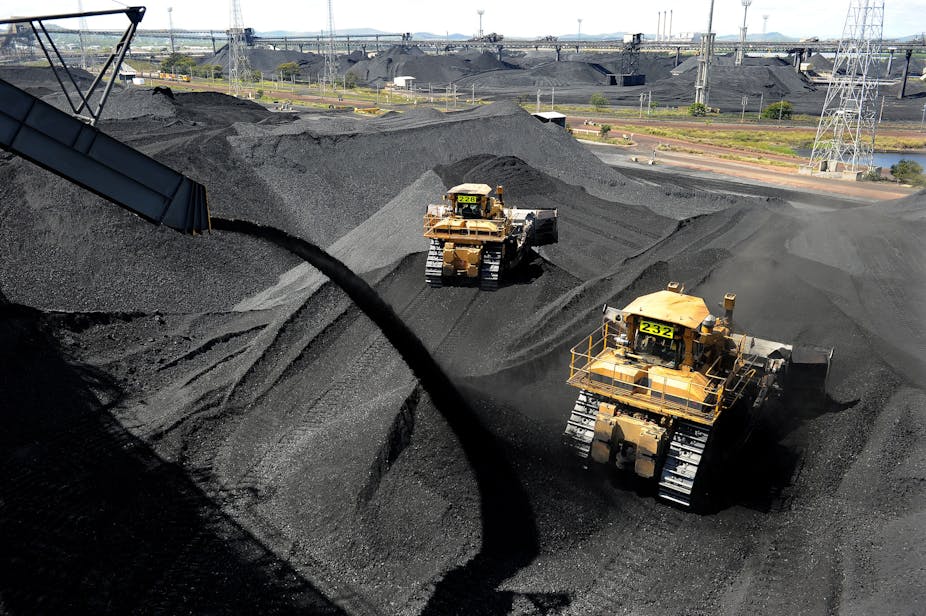The Queensland Government has decided to raise coal mining royalties. Seems reasonable, doesn’t it?
A review of Queensland Pty Ltd by Peter Costello revealed a precarious balance sheet. Time to get things right, or at least moving in the right direction. Probably the word “responsible” needs to be inserted here too.
Part of that agenda is an evaluation of state costs and revenues. Part also is the evaluation of state assets and liabilities. Coal reserves are an asset, and the extraction of coal reserves generates a revenue. So it is hardly surprising that coal should feature in Queensland Treasurer Tim Nicholl’s new fiscal planning.
When the Treasurer said at his press conference that “Queenslanders own the resources in the ground here and are entitled to get a return on those resources”, he’s right.
The charges state governments make for the extraction of coal are called royalties. The term causes confusion, for it suggests they are charges made by the crown and hence they get conflated with the crown’s capacity to appropriate taxes. But royalties are not taxes.
Hancock Prospecting, the company at the core of Gina Reinhart’s corporate wealth, made its fortune charging royalties for the extraction of Hamersly iron ore. Royalties attach to the ownership of in situ reserves, and that ownership may or may not lie with the state.
So we need to think of coal reserves as a warehouse, and when you take commodities out of a warehouse, you diminish the asset base. There is appropriately a charge. The royalty is to be understood as a cost of production that must be paid along with the costs such as labour and freight.
It is inherently contentious how much of the cost of a tonne of extracted coal is to be called a cost of digging the stuff up, and how much of it the value of the stuff itself.
There is, accordingly, a debate to be had about dividing up the revenue of a tonne of coal, for each mine has different costs of production (difficulty of getting it out the ground, onto ships, and into the hands of end-users), mines can have different efficiency, and the coal itself can be of different qualities.
So how the revenue divides between profits, royalties, rent (for use of the surface land) and other costs is something of an arm wrestle.
But the in-situ reserves are finite, and the owner of those reserves can reasonably say that any tonne of coal can only be extracted once, and if the payment to the owner of the coal is not high enough, they might prefer to leave it in the warehouse (the ground) and sell it at another time.
So the Queensland Government is well within its rights to amend the price. BHP Billiton chairman Jac Nasser has described the coal royalty increases as “unbelievable” and “disappointing”. That’s as expected, for it comes off the bottom line of BHP coal mining profits. But he cannot contest the principle that there should be a reasonable price for access to in situ reserves, just as there should be for labour, equipment purchase and transportation.
But the puzzling thing is that the Queensland Government has framed its royalty policy to look like a surplus profits tax, and so it feeds the Nasser response.
The policy is to increase the rate for coal royalties to 12.5% on the value per tonne between $100 and $150 and to 15% thereafter.
But the rate for coal below $100 a tonne is not changing. According to the Treasurer Tim Nicholls: “It is only when prices start climbing that the new higher rates will progressively apply, ensuring Queenslanders share in the upside of the value of their resources.”
So if the charge is a royalty, the government could reasonably say that every tonne of its in-situ reserves has a “reserve” price. But when there is one rate when the price of coal is low, and another when the price of coal is over a threshold, it looks like a different claim.
Either it is simply an exercise of mark-to-market accounting (that the value of coal reserves change directly with each movement with the price of coal) or it looks like the Queensland royalty policy is being framed more as a claim on profits, not a cost of production.
Conceptually, it’s a minefield.
Nonetheless, the Queensland government has a good case. Yet it never really plays itself out as just described. Not only is coal sold on long-term contracts, but there are jobs (and votes) at stake. The mines will never open and shut to secure a constant royalty, and no-one is arguing that they should!
Moreover, in the sphere of national politics, these theoretical niceties disappear. If it looks like a profit-related charge, the Feds will be onto it. They have a right to surplus profits tax, not the states.
So royalties are a cost of production, but it is virtually impossible for state governments to make them appear as such. They appear as a claim on revenue, not as a cost of production, and hence an incursion on the federal government’s domain.
The funny thing is that Gina Rinehart’s royalties do appear as a cost of production for mining companies, but somehow they became tied up in a debate about surplus profit taxes.
Perhaps the Queensland government has something to learn from Gina. Indeed, looking at the public sector sackings that are also part of the Queensland budget, is seems like they already have. It’s a frightening thought, but it will no doubt be on the mind of the Federal Treasurer as he determines his response.

